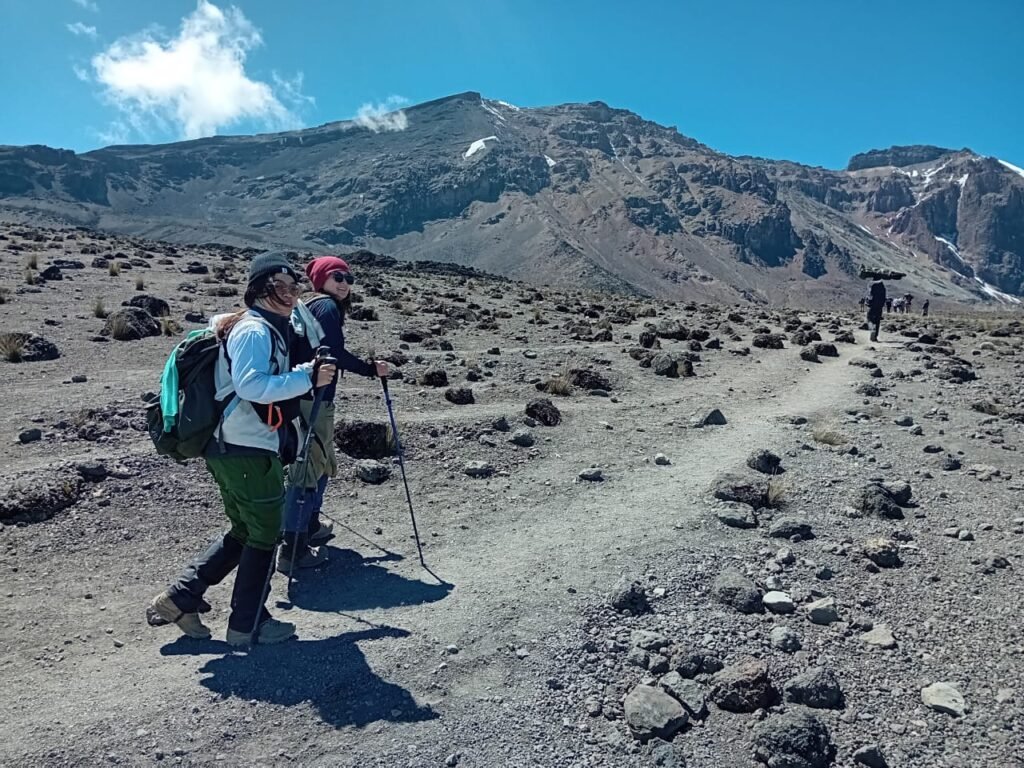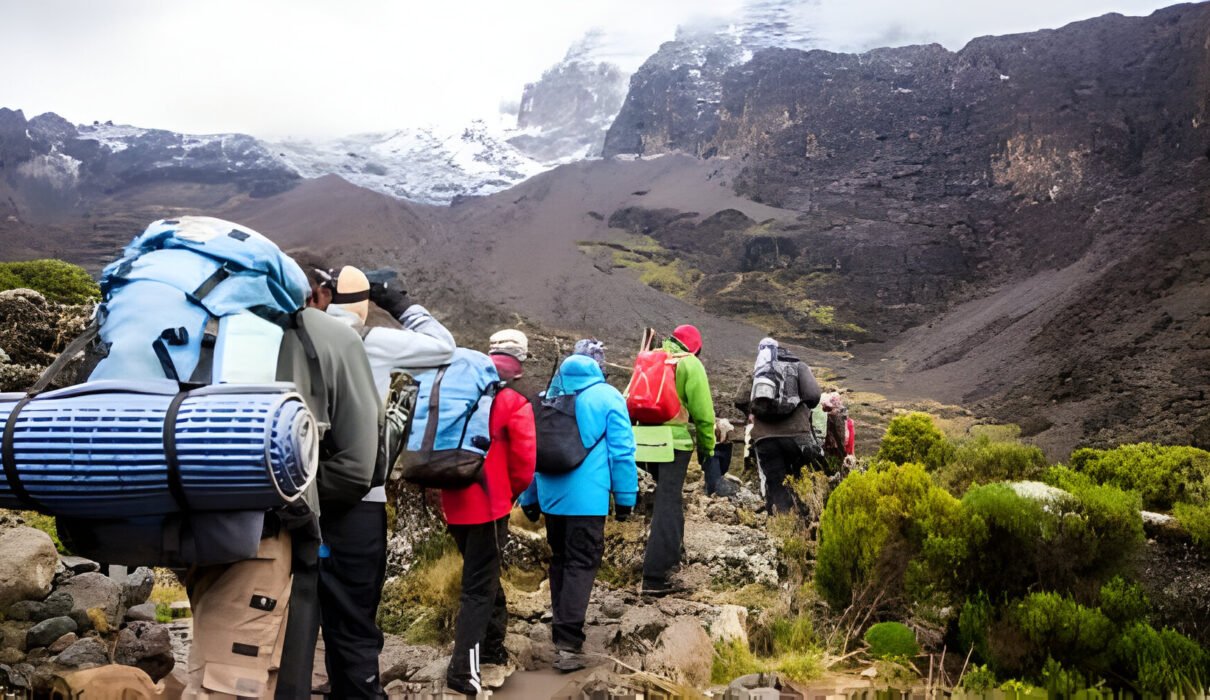Climbing Mount Kilimanjaro is a dream for many, but for those who are afraid of heights, the idea of ascending Africa’s tallest peak may feel daunting. The good news is that Kilimanjaro is considered a non-technical climb, which means there are no sheer drops or vertical climbs requiring special equipment. This guide will address your concerns about heights, explain what to expect, and offer tips to help you successfully conquer Kilimanjaro despite your fear.
Plan your Kilimanjaro climb with expert guidance.

1. Is Height Really a Concern on Kilimanjaro?
Unlike other mountains, climbing Kilimanjaro does not involve dangerous cliffs or exposed ledges. The paths are mostly wide, gradual trails. While the altitude is high, the terrain is less intimidating than technical climbs. Most people with a fear of heights find the trek manageable, as there are very few points where you are walking near steep drop-offs.
- What to Expect: Gradual trails and minimal exposure to high, dangerous ledges.
- Tip: Stick to well-trodden routes like the Marangu or Machame routes for peace of mind.
Learn more about Kilimanjaro’s trekking routes.
2. Focus on Acclimatization, Not the Height
The biggest challenge on Kilimanjaro is not the fear of heights, but rather the altitude. Proper acclimatization is key to a successful climb. Focus on adjusting to the high altitude by choosing a longer route, such as Lemosho, which allows more time for your body to adapt. The gradual ascent helps you avoid altitude sickness while giving you a chance to enjoy the stunning landscapes.
- Acclimatization Tip: Take your time, hike slowly, and hydrate regularly to adjust to the high altitudes.
- Best Routes: Longer routes like Lemosho or Machame offer better acclimatization opportunities.
Read more about the importance of acclimatization.
3. Mental Preparation: How to Overcome Fear of Heights
Climbing Kilimanjaro is as much a mental challenge as it is a physical one. If you have a fear of heights, preparing mentally before your climb can help you manage anxiety. Start by practicing mindfulness, meditation, and visualization techniques. Imagine yourself successfully reaching the summit and focusing on the beauty of the journey, not the height.
Tips for Overcoming Fear of Heights
- Take it Step by Step: Break the climb into smaller goals. Focus on each step rather than the overall height.
- Mindful Breathing: Practice deep breathing exercises to calm your nerves when you feel anxious.
- Positive Visualization: Picture yourself at the summit, celebrating your achievement, and surrounded by stunning views.
Discover more mental strategies to overcome fear of heights.
4. The Summit Experience: What You Need to Know
On summit day, you will reach the highest point in Africa: Uhuru Peak at 5,895 meters (19,341 feet). While this altitude sounds intimidating, the paths are still non-technical, and you won’t encounter any steep drop-offs. Summit day is challenging due to the cold, long hours, and thin air, but the trails remain wide and manageable.
- Summit Path: The path to Uhuru Peak is well-trodden and safe, with no exposure to vertical drops.
- Summit Tip: Keep your focus on the trail ahead and celebrate small milestones along the way.
Learn more about Kilimanjaro’s summit experience.
5. Managing Anxiety During the Climb
Even though Kilimanjaro is a relatively safe climb for those afraid of heights, it’s normal to feel some anxiety during the trek. Managing this anxiety is key to enjoying the journey. Communicate with your guide about your concerns—they are experienced and can help reassure you and provide extra support when needed.
Coping Techniques for Anxiety
- Focus on Your Breathing: Deep, slow breathing helps reduce stress and anxiety.
- Stay in the Present Moment: Focus on the ground beneath you and the rhythm of your steps rather than looking ahead at how far you have to go.
- Talk to Your Guide: Let your guide know if you’re feeling anxious—they can help you adjust your pace or find a better route.
Find more anxiety management techniques for hikers.
6. Choosing the Right Route for Your Comfort
Not all Kilimanjaro routes are the same, and some are better suited for people with a fear of heights. Marangu and Rongai routes are known for their gradual, less exposed trails. The Marangu Route, in particular, is the only route that offers hut accommodations, which can also provide extra comfort and reassurance for nervous trekkers.
- Best Route for Nervous Climbers: The Marangu Route is known for being easier with gentle slopes and hut stays.
- Other Good Options: The Rongai Route also offers a more gradual ascent with fewer steep sections.
Explore Kilimanjaro routes and find the best option for you.
7. Safety Measures: How Guides Keep You Safe
Your safety is the top priority for Kilimanjaro tour guides. They are trained to support climbers who may have fears or concerns, ensuring that everyone feels comfortable and confident throughout the trek. Guides monitor your pace, help you avoid any potential risks, and are always available to provide reassurance.
What Guides Do
- Pace Control: Guides will ensure that you walk at a pace that is comfortable for you, minimizing stress and anxiety.
- Route Selection: Experienced guides choose paths that are safe and suited to your fitness and comfort level.
Learn more about Kilimanjaro guide support and safety protocols.
8. Enjoy the Journey: Focus on the Views, Not the Height
One of the best ways to distract yourself from any fear of heights is to focus on the stunning scenery around you. Kilimanjaro offers diverse landscapes, from rainforests to alpine deserts, and finally, to snow-capped peaks. As you climb higher, take the time to appreciate the natural beauty around you instead of worrying about how high you are.
- What to Look For: Wildlife in the rainforest, unique plant species, and panoramic views of the surrounding plains.
- Photography Tip: Keep a camera handy to capture the beauty and shift your focus away from height-related fears.
Discover more about Kilimanjaro’s diverse landscapes.
9. What to Expect at Different Altitudes
Kilimanjaro takes you through five different climate zones, from lush rainforests to barren arctic conditions at the summit. Each zone offers unique sights and experiences, but none involve steep drops or cliffs. Knowing what to expect at each altitude can help you mentally prepare for the journey and reduce anxiety.
- Rainforest Zone: Lush, green trails with plenty of shade.
- Heath and Moorland Zone: Open, grassy plains with rolling hills.
- Alpine Desert Zone: Rocky terrain with vast, open views.
- Summit Zone: Snow-capped peaks and glaciers with breathtaking views.
Read more about Kilimanjaro’s altitude zones.
10. Final Thoughts: Can You Do It?
If you are afraid of heights but dream of climbing Kilimanjaro, know that it is absolutely possible. With the right mental preparation, choosing the right route, and staying focused on the journey rather than the height, you can successfully reach the summit. Kilimanjaro’s non-technical climb makes it accessible for adventurers of all backgrounds, and the feeling of accomplishment at the summit is worth every step.
For more information on planning your Kilimanjaro climb, visit Kilimanjaro Climb Specialist or Eddy Tours & Safaris.

